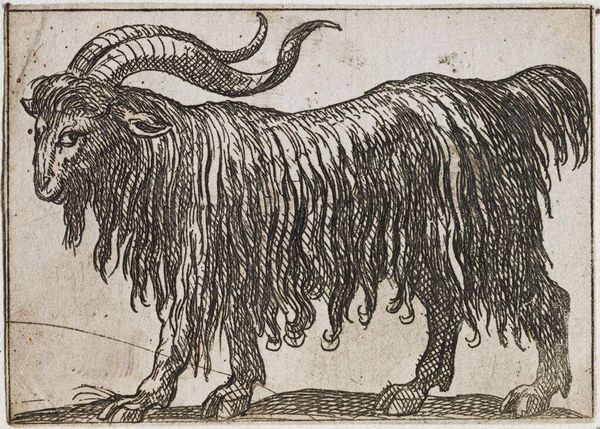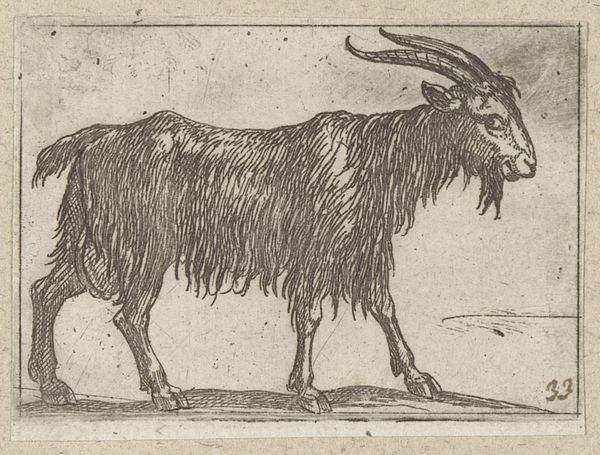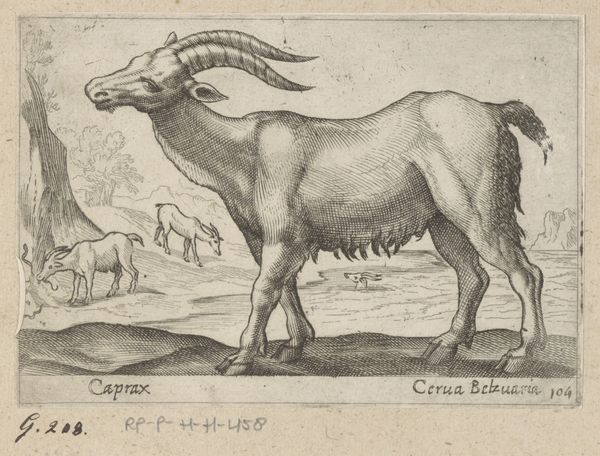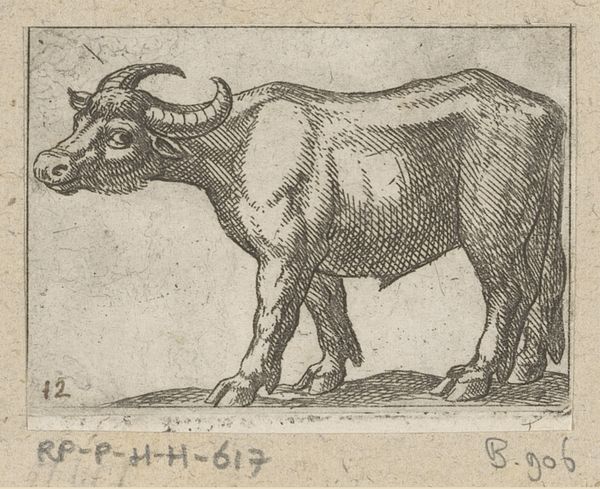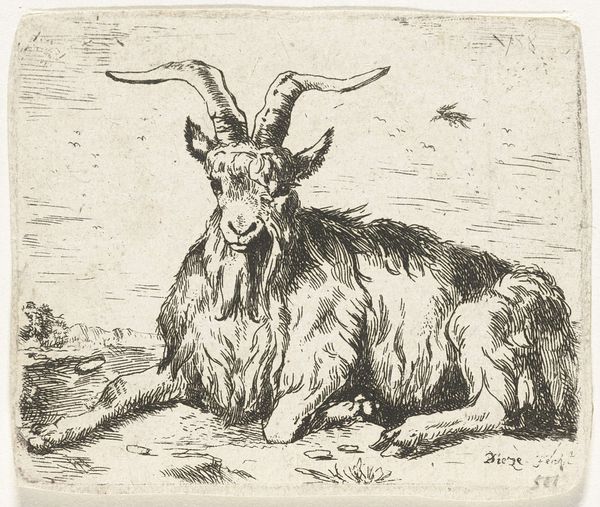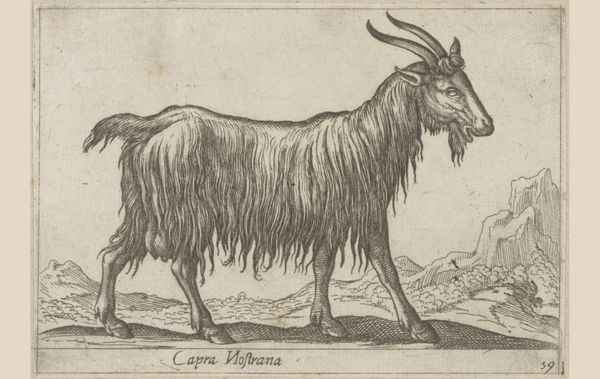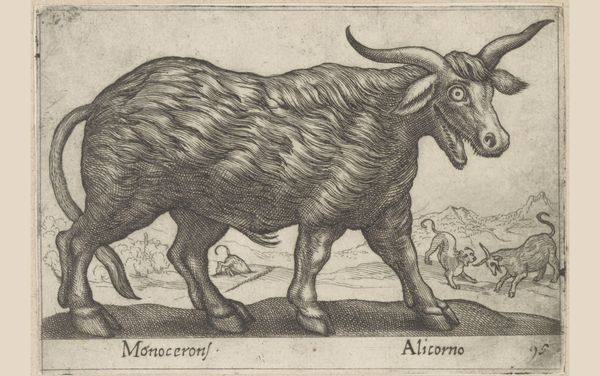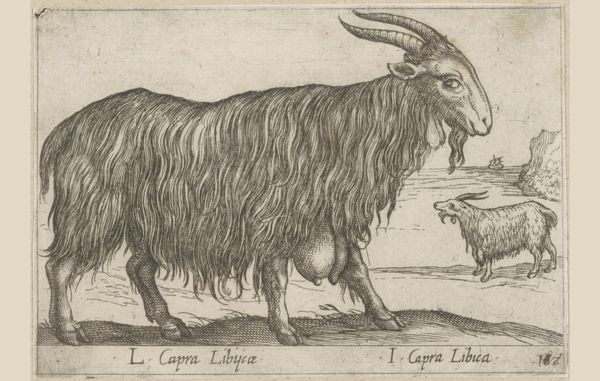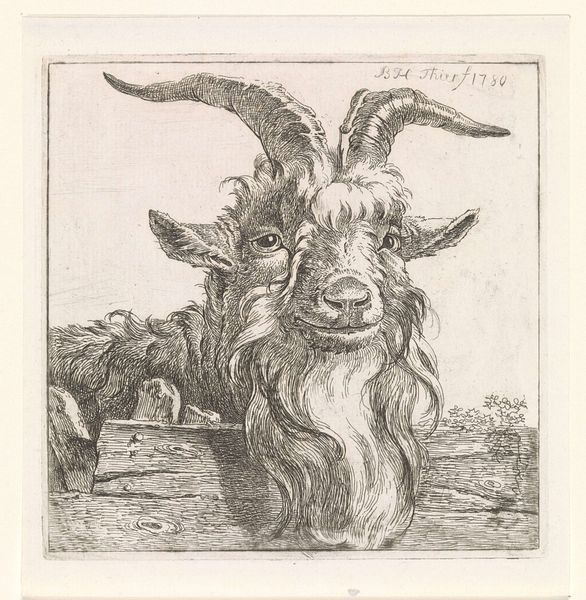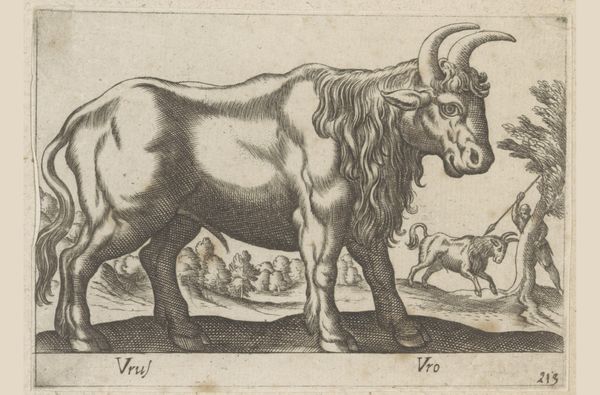
print, metal, etching, engraving
#
baroque
# print
#
metal
#
etching
#
figuration
#
line
#
engraving
Dimensions: height 43 mm, width 67 mm
Copyright: Rijks Museum: Open Domain
Curator: So, here we have "Standing Mountain Goat", an etching and engraving, created sometime between 1565 and 1630. The artist behind it is Antonio Tempesta, and it resides here in the Rijksmuseum. Editor: It's... intensely hairy. That's the first thing that strikes me. I feel like I need to brush this goat. The fur dominates everything, swallowing the form. Curator: It’s interesting you say that! For me, that exaggerated texture almost lends the animal a mythic quality. Tempesta was known for his dramatic scenes and dynamic compositions, and there's a kind of baroque energy here, wouldn’t you agree? Editor: Absolutely. I'm curious about the context, though. What purpose did prints like this serve? Were they purely decorative, or did they circulate within a particular intellectual or artistic sphere? The goat itself, with its abundant hair and powerful horns, can also be associated with ancient mythological creatures or even symbolize masculine virility. Curator: I see that. There’s an assertiveness to this animal, a primal force rendered with remarkable detail. What gets me is the unwavering stare, as though he knows exactly how imposing he appears. What’s he guarding, do you think? Or is he about to charge? Editor: Maybe the better question is: who or what is *he* guarded *from*? Given the timeframe, during and after the Protestant Reformation and ensuing religious conflicts, perhaps this mountain goat can even be a commentary on social classes, access, boundaries, wealth… A stark symbol of nature's untamed power, fenced in. It reminds me a bit of how some people view natural resources today. Curator: Interesting thought, bringing us into contemporary contexts! What started for me as a light-hearted, almost humorous impression, of this slightly frazzled-looking creature, suddenly grows weightier through this lens of historical commentary. Editor: Exactly, and that is why connecting historical context to contemporary perspectives makes this much more accessible. Curator: Well, that’s quite a journey this hirsute goat took us on. Thank you, my friend, for joining me on that path! Editor: The pleasure was all mine. And now, I can see that this humble image also invites reflection and connection, prompting dialogue about societal expectations and personal stories!
Comments
No comments
Be the first to comment and join the conversation on the ultimate creative platform.
